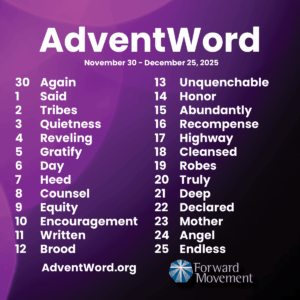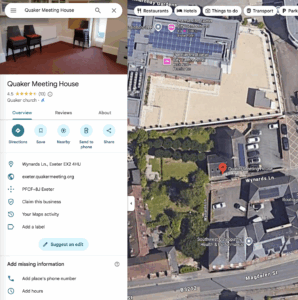Back to basics for better charity comms
Welcome to another instalment of our A–Z of communications. This time, W is for Who, What, and Where. A deceptively simple trio that holds the key to clarity in almost every piece of communication you send out, from Facebook posts to event invites.
We’ve all had that moment: reading something and thinking “but what exactly are they asking me to do?” or “is this relevant to me?” That’s usually because one (or more) of the who, what, or where is missing.

Whether you’re a one-person comms team, a trustee tasked with putting out a post, or just someone trying to keep the website up to date between meetings, having a clear handle on these three little words can help you avoid confusion, cut down on back-and-forth, and get better results.
Who is it for?
This should always come first. Are you talking to:
- the general public?
- your regular service users?
- donors and funders?
- local councillors?
- volunteers?
- fellow staff?
Knowing your audience makes everything else easier, it shapes tone, format, and even where you post it. If it’s for a specific group (like people already on your email list), say so. If it’s open to all, make that clear too.
Example: “Open to all ages,” or “Specifically for new trustees” can help people self-select and avoid disappointment.
What are you actually telling them?
Be specific and clear. If it’s an event, say what it’s about, not just the title. If it’s a role description or job ad, explain the role in plain English. If you’re sharing good news, connect the dots to show why it matters.
Avoid assumptions or vague words. “Join us for a special evening!” sounds nice, but doesn’t tell people if they need to book, bring money, or wear something sparkly.
Checklist:
– Is there an action they need to take?
– Is there a deadline or time-sensitive detail?
– Can they scan the first two lines and get it?

Where is it happening?
In-person? Online? If in-person, give an address or link to directions. If online, give the platform (Zoom? Teams? YouTube?) and what they’ll need to join.
Don’t assume people already know where your venue is, especially if your audience is growing or you’re welcoming new participants.
Pro tip: If your charity runs activities across multiple venues, add a simple location tag to all graphics or posts:
📍 Scarborough | In-person
🌐 Online via Zoom
Why it matters...
When any of the three Ws is missing, people either scroll on or get confused, and that means your carefully planned event or update doesn’t reach its full potential. It also creates extra admin when people email to ask questions or show up in the wrong place.
Being clear about Who, What, and Where:
– Saves time
– Reduces confusion
– Builds trust in your organisation
– Helps your team feel more confident about publishing updates
Bonus: Add the fourth W - When
It might not be in the headline, but don’t forget to add dates and times, including any cut-offs for booking or joining in. Include the day of the week too, it makes life easier!
Example: “Thursday 3 October, 2pm–3.30pm on Zoom” is far clearer than “03/10/25.”
A real-life muddle...
One small charity shared a brilliant flyer on social media, a colourful graphic advertising their free autumn activities. But the post didn’t say where they were taking place, or how to book. People were interested but didn’t know how to join in. A quick fix? They added a new post the next day with the Who, What, Where (and When) included, and saw more shares and enquiries within hours.
In summary
Before you post anything public-facing, ask yourself:
– Who is it for?
– What do they need to know?
– Where is it happening?
– (and When?)
These basics may not sound fancy, but they’re the foundation of clear, helpful communication, and help your audience trust that your charity is organised and on it.
Mini exercise: The “W” Challenge
Pick one upcoming event, announcement or social media post your charity is planning. Before you hit publish, run it through the 4 Ws:
1. Who is it for?
2. What do you want them to know or do?
3. Where is it happening?
4. When is it?
Share it with a colleague or volunteer who’s *not* involved in planning. Ask them: “Does this make sense to you in under 10 seconds?” If not, tweak and try again.
At MBS, we help charities simplify their admin and comms so they can get back to doing good. Follow our A–Z series for more practical ideas, or get in touch to talk about how we can support your systems, content, or clarity.

Gemma White
MBS Marketing
Championing clear communication and smart systems for the charity sector.






